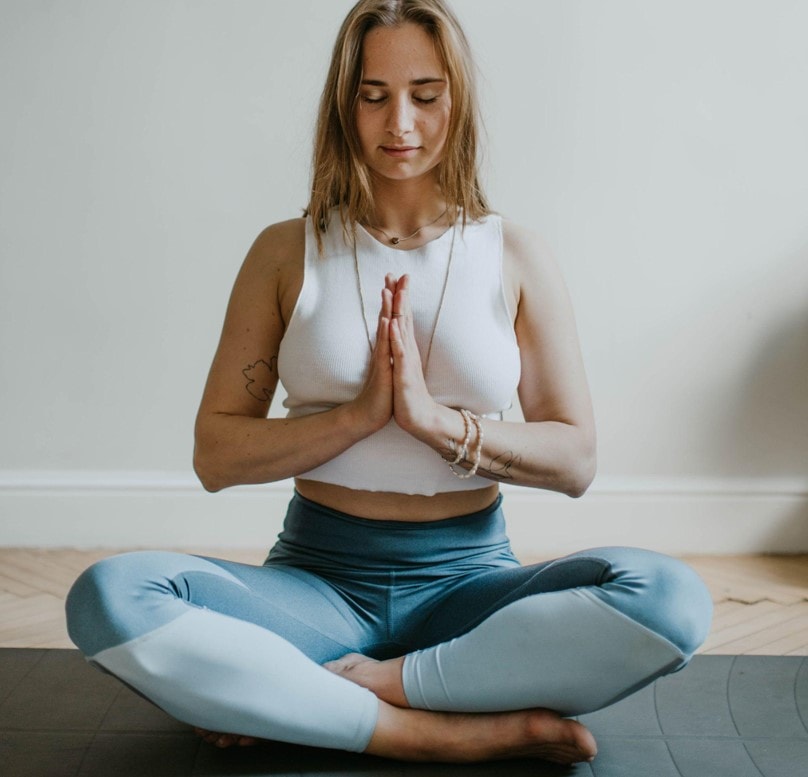It’s not uncommon to experience difficulty sleeping, whether it’s the effects of stress, anxiety, insomnia, or other sleep disorders that can prevent you from enjoying a good night’s rest.
If you’re unable to fall asleep or experience interruptions during the night, this may result in a lack of concentration and sleepiness during the day, which has an adverse impact on your health and well-being.
There are specific types of breathing exercises and techniques that can soothe and relax you before bed so that you can enjoy a night of quality sleep.
How Breathing Techniques and Better Sleep Can Improve Your Health
There are many benefits to improving your sleep quality, which can be affected by stressful situations involving finances, work, family, and other concerns.
Sleep apnea, insomnia, and other sleep disorders can lead to several problems that affect you during the day, including fatigue, difficulty concentrating, frequent mood changes, irritability, less energy, and poor performance at work or school.
While the occasional night of disruptive sleep may not impact you negatively in the long term, consistent problems with insomnia or sleep disorders can lead to more serious health issues, including asthma, depression, diabetes, heart disease, adverse effects on your mental health, and other conditions.
When you practice specific breathing techniques before bed and when you experience stress or anxiety, you’ll shift your mind and body into a more calming state ideal for quality sleep.
Concentrating on deep breathing and practicing specific techniques can ease the feeling of stress and pressure, which not only improve your sleep but also calm your nervous system.
These exercises will reduce the symptoms of respiratory conditions and decrease stress while increasing melatonin production, which is vital to maintaining sleep-inducing hormones that help you achieve a good night’s rest.
The Best Breathing Techniques for Quality Sleep
Several breathing techniques will help you improve your sleep. As you practice each one of these exercises, it’s essential to practice good posture and find a quiet space, with little or no distractions, to improve the effects of breathing for relaxation.
1. The 4-7-8 Breathing Method
The 4-7-8 breathing technique, developed by Dr. Andrew Weil, a sleep expert, is done by sitting on a comfortable but firm surface with your back straight.
Before you begin, move your tongue so the tip rests on the gum tissue just behind the upper front teeth. Keep your tongue in this place during this breathing practice.
- Exhale completely, and close your mouth
- With your mouth closed, inhale through your nose and count to four
- Hold your breath while counting to seven
- Release your breath through your mouth, counting to eight
- Continue to repeat this practice three or four times
Following these deep breathing exercises, you’ll find your body feels at ease. It’s an excellent breathing method to practice at least twice a day, once in the daytime, during a break at home, work, or school, and again before sleep.
It’s essential to maintain the ratio throughout the exercise, and if you find the length challenging to achieve, count a little faster, and you’ll enjoy the same results.
Controlled breathing is the main feature of this method that will provide a calming sensation.
2. Box Breathing
This method is also known as square breathing, a relaxation technique before sleep. Box breathing is easy to perform anywhere, whether at work or taking a quiet break, with minimal distractions.
- Inhale and count to four
- Hold your breath briefly, for four seconds, then release
- Count to four as you exhale
- Wait for four seconds, then repeat the process three or four times
Box breathing is an excellent technique if you only have a few minutes available, and you can perform this exercise while sitting on a comfortable chair, on the floor, or lying down before bed.

3. Diaphragmatic Breathing
This technique, also known as belly breathing, focuses on using the diaphragm located at the bottom of your lungs, strengthening your breathing.
It’s helpful to lie down for this abdominal deep breathing technique in a position that’s most comforting for this exercise.
- Lie down on a firm, flat surface and slightly bend your knees
- Using two pillows, place one between your knees, and the other behind your head
- You’ll use your hands to follow your breath, with one placed on your stomach and one on the upper part of your chest
- As you inhale, focus on drawing your breath from your stomach or diaphragm area. You’ll notice your stomach rises during this process, and your chest should remain steady
- Exhale slowly, and notice your tummy flattening as your chest remains in the same position
- Continue this breathing technique with both hands to ensure your stomach is rising and lowering with each breath while your chest remains in place, indicating that you’re drawing each breath from the diaphragm
If you’re new to this breathing practice, it’s best to begin lying down until you become accustomed to the technique. Then, you can try the same exercise sitting in a chair or on the floor.
It’s ideal to start this method for five minutes each session, three or four times daily, until you can increase the breathing exercise to ten minutes each time.
4. Alternative Nostril Breathing
This breathing exercise is commonly used during yoga practice and helps clear your mind and bring a sense of ease. It’s ideal for performing this breathing pattern sitting on a chair or with your legs folded on a mat and your back straight.
- Rest both hands on your lap, and lift one toward your face
- Lightly press two fingers between your eyebrows, as you’ll be using one finger and thumb during this exercise
- Inhale deeply and close your eyes, then exhale slowly through your nose
- Place your right thumb to press down and close your right nostril, then breathe slowly and evenly through the left nostril
- Close the left side of your nostril with your finger, holding both closed for a moment to hold your breath for a few seconds
- Release your thumb to press down your right nostril, then proceed to exhale slowly through the right side, then pause
- Inhale through the right nostril, which is unrestricted, then hold both closed for a few seconds, holding your breath
- Open the left nostril, exhaling slowly, then take a brief break when the breath is completely expelled
This breathing technique may take some practice to get used to, and it’s ideal when you meditate or listen to relaxing waves or similar background sounds that soothe and help you relax.
5. The 5-5-5 Breathing Method
When you practice this breathing technique, you’ll find it helps calm the parasympathetic nervous system, which involves slow, deep breathing and holding your breath for five seconds after an inhale, and an exhale.
- Sit or lie down in a comfortable position, then inhale slowly through your nose
- Hold your breath, and count to five
- Slowly exhale until all your breath is expelled
- Hold this position and count to five before taking the next inhale
- Continue these steps for one or two minutes or as long as possible
This deep breathing technique is ideal for beginners, as it doesn’t require much practice, and helps you feel less nervous, stressed, or anxious as it calms you down relatively quickly. You’ll find the process may only take one minute to notice significant results.

Final Thoughts
If you’re just getting started with a new breathing method, it’s essential to try the simplest option first, then attempt one or more other techniques to find which breathing exercise works best.
It’s important to start slowly, and stop at any time if you feel unwell, find it hard to focus on your breathing, or have too many distractions.
When you set a schedule to practice your breathing exercise, choose the same time daily, and spend at least fifteen or twenty minutes on each session.
Learning breathing techniques for sleep can provide numerous health benefits during the day while helping you enjoy a good night’s rest every night.

